
Shop Tour, 2024
A lot has changed in the shop, at least as far as layout goes. I haven’t bought any new tools of note; I didn’t need any, and I spent half the year just getting my left arm working at something approaching full strength again.
The big change is basically rotating the middle of the shop 90 degrees. This did a couple of things for me, one of which was a happy accident:
- By turning the middle, I gained some infeed space for the table saw and made my life a lot easier taking the trash cans in and out.
- By rearranging the other tools, I was able to put everything within easy reach of the dust collector, while the dust collector stays in the corner.
- I have generous aisles all around the middle now, where it was kind of cramped before.
Of course the garage didn’t get any bigger, so there was also a cost. The collapsible table by the garage door got collapsed for good, and the underpinning got thrown away. I still have the table top, but I don’t know where or how I will use it. And I no longer have more than about 3 feet of infeed space for the planer without opening the garage door, which will probably come back to bite me in the winter.
Here’s the core of the shop:
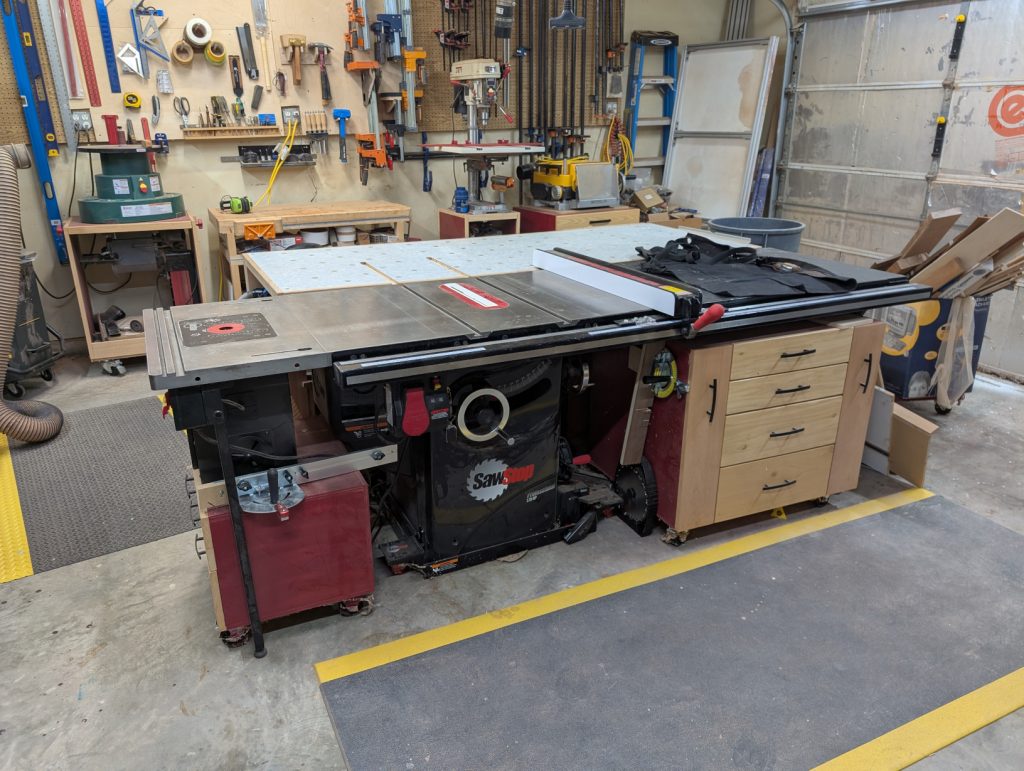
All that machinery stayed put other than the rotation. My box of wood scraps (which is not nearly all of it) is on a furniture dolly, so I can and do move it around a lot.
But the main achievement from doing that is the dust collection.
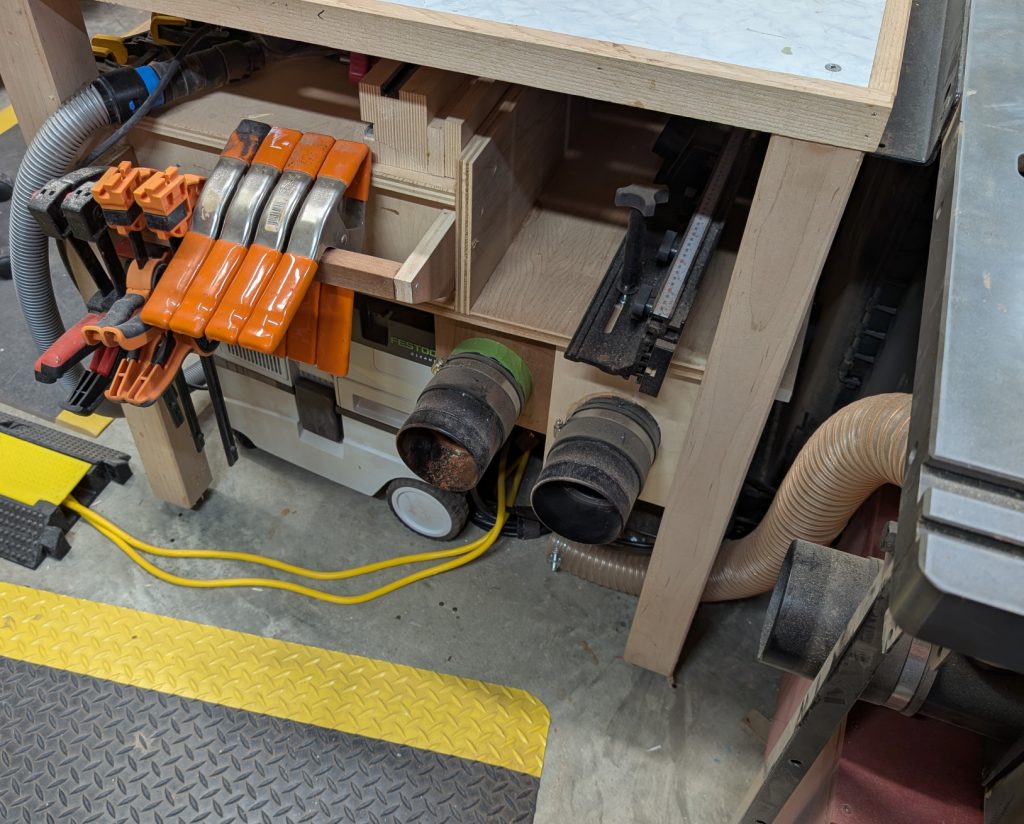
The far right connection is for the router table in the saw table, of course. In the middle is the table saw itself, and to the left is a connection to another dust hose that goes underneath the outfeed table and services the jointer and the planer on the far side. Behind this photo, the other router table and the bandsaw are right behind me, so I can literally move the dust collection from tool to tool with at most a pivot and a step. Unbelievably convenient!
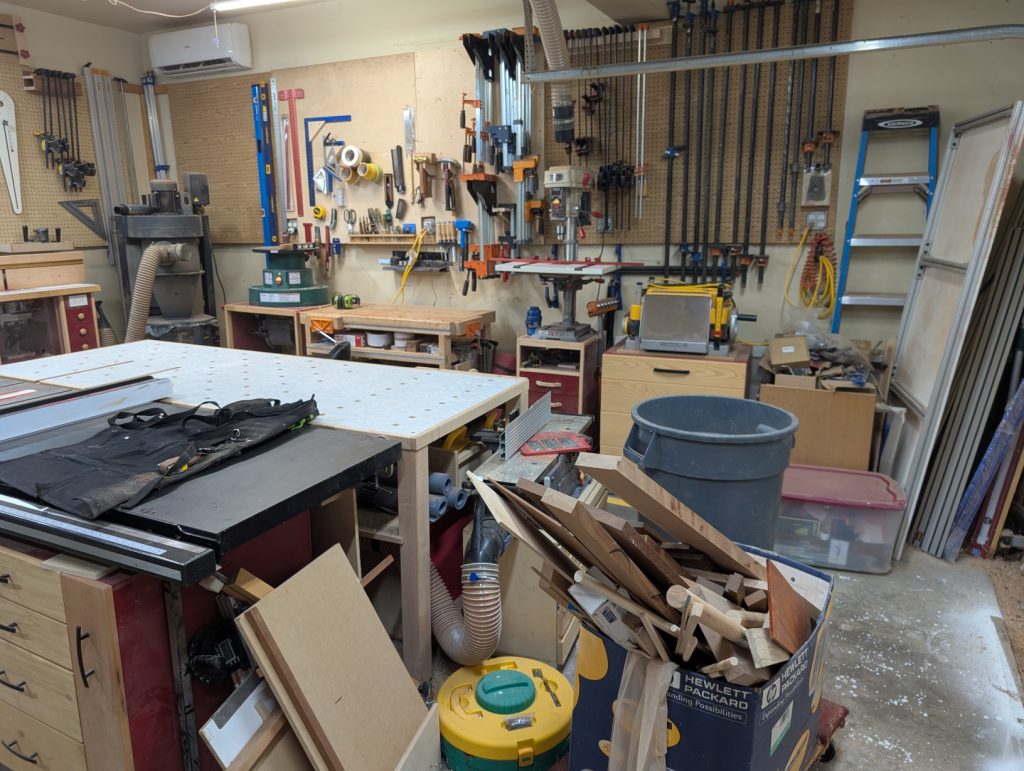
Here you see the far wall, where most of my tools (that hang) and clamps are stored. I was striving for what Adam Savage calls “first order of retrievability” here; the things I use and reach for most often are in the easiest reach, and it moves outward (less convenient) from there. The most retrievable are the things in the drawers of the assembly table — planes, most often used measuring tools, drills, screws, etc. The planer is against the wall, but that’s not where I use it; for that, but scrap box scoots back out of the way and the planer gets wheeled and set in front of the jointer, where there is enough dust hose to hook it up. I will probably have to add another piece of flex hose in the cold season because opening the door when it’s 10 degrees out will not be fun — I’ll move the planer to in front of the table saw so I can plane an 8-foot board with the door closed.
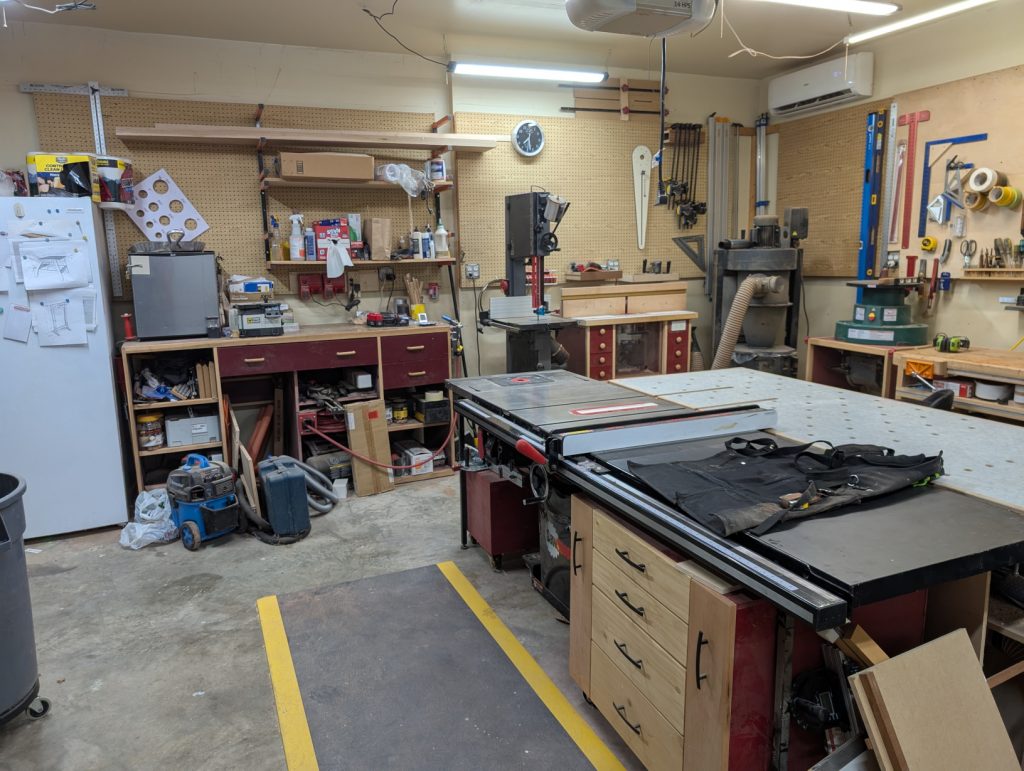
Here you can see the new arrangement of the spindle sander/belt sander, dust collector, older router table, and bandsaw. Having the routers remain in close proximity gives me the ability to keep most of my router accessories at the big table but still be able to grab them easily to use at the other router table. I’m now using the rack that used to sit over the old router table as a shelf unit for storage of glues, finishes, and related supplies.
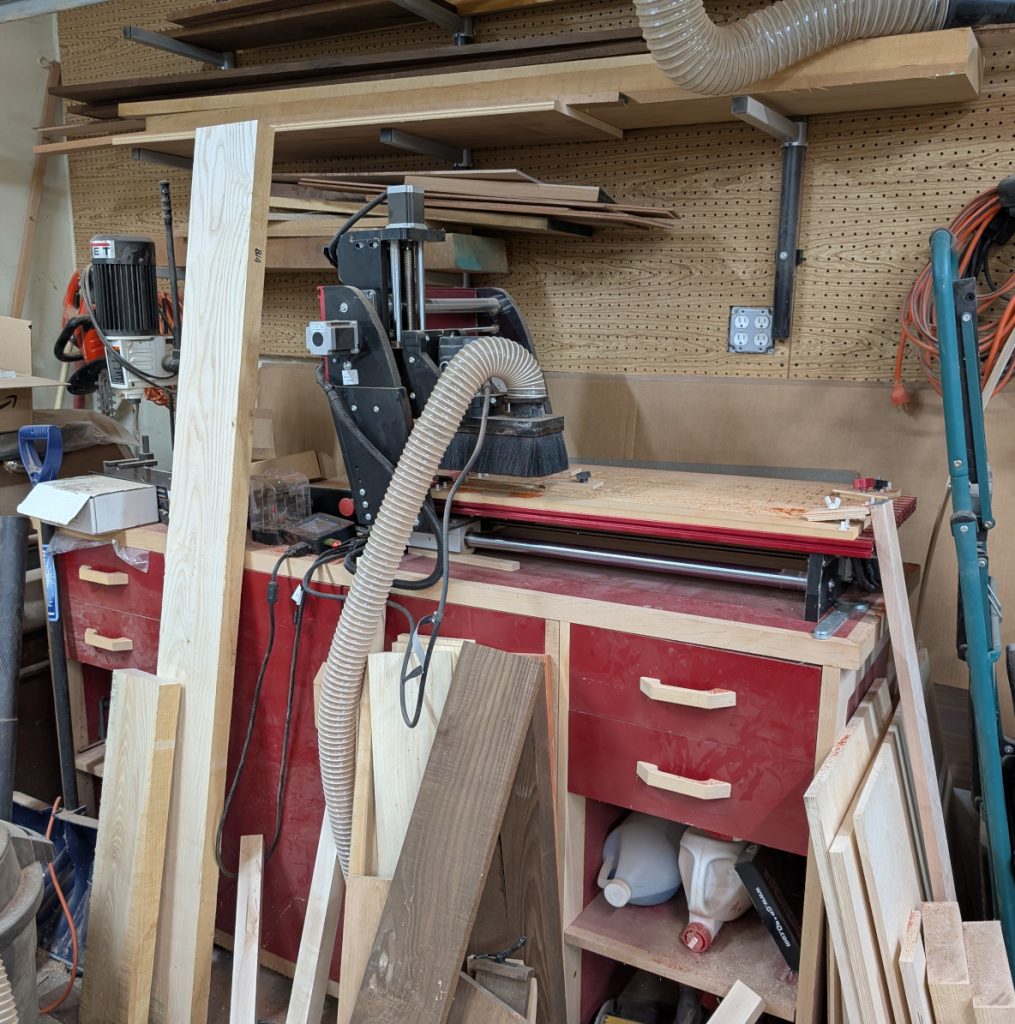
And then we come to the ugliest part of the shop. This area behind the table saw is … well, an eyesore to say the least. This is partly my indecision on what to do with the CNC and partly old decisions that aren’t working out as well as I’d hoped.
I’m conflicted about the CNC at this point. Having now used Erik Curtis’s Shaper Origin I really wish I’d spent my money on that instead of this machine. The Origin can do everything that this Shark can, but there are no size limits on what I can use the Origin on and the Origin doesn’t lock me into vCarve and nothing else. But, I didn’t do that and this Shark represents $2500 invested that I’m really not getting much out of. I’ve made a half-hearted try at selling it, no takers. And I have used it — most recently for the project I showed you in Everything is a Box — just not anywhere near as much as I thought, because I hate vCarve and half the time what I want won’t fit in the 13×25 area it limits me to. The Origin would take up a lot less space, too. But a workable Origin with the accessories I would want costs $3,000, which is a lot of money — the Shark is currently by far my most expensive tool, and an Origin would eclipse that.
Plus, of course, I clearly have a problem with wood storage. I keep too much, like almost every woodworker, and my cutoffs tend to be larger than a lot of woodworkers because I make primarily large things. I’m seriously thinking about getting rid of my wood rack and the storage unit the CNC is sitting on and switching to vertical wood storage. That should allow me to store my large cutoffs in a more accessible way and encourage me to just trash the small stuff. But of course if I did that, I would have to either sell the CNC or make a new table for it (which is tantamount to a commitment to keep it).
Another problem I have is the accumulation of small bit of hardware — bolts, nuts, and washers but also things like chain, latches, box hinges and catches, Velcro cable ties, magnets and whatnot. It’s mostly in drawers, and I threw away a lot of it recently, but it’s not organized and not easy to search when I do need something. Something better must be done, and I’m starting to think about Rag-n-Bone Brown’s setup of dozens of small drawers with labels telling you what’s in each.
And finally, I have to put some thought into jig storage, especially table saw jigs. I have a couple of crosscut sleds now: a big crosscut sled, a 45-degree beveled one for large miters, a Dubby for mitered crosscuts, a dovetail-slotted one for tapers and weird angles, plus my old mitering/jointing sled. Some of these are sitting on the floor (not good) at the end of the table saw, some are under another piece, some are behind or beside other tools. Need to do something better there, too.
Stuff to think about. Meanwhile, I have other projects to take care of.








Recent Comments